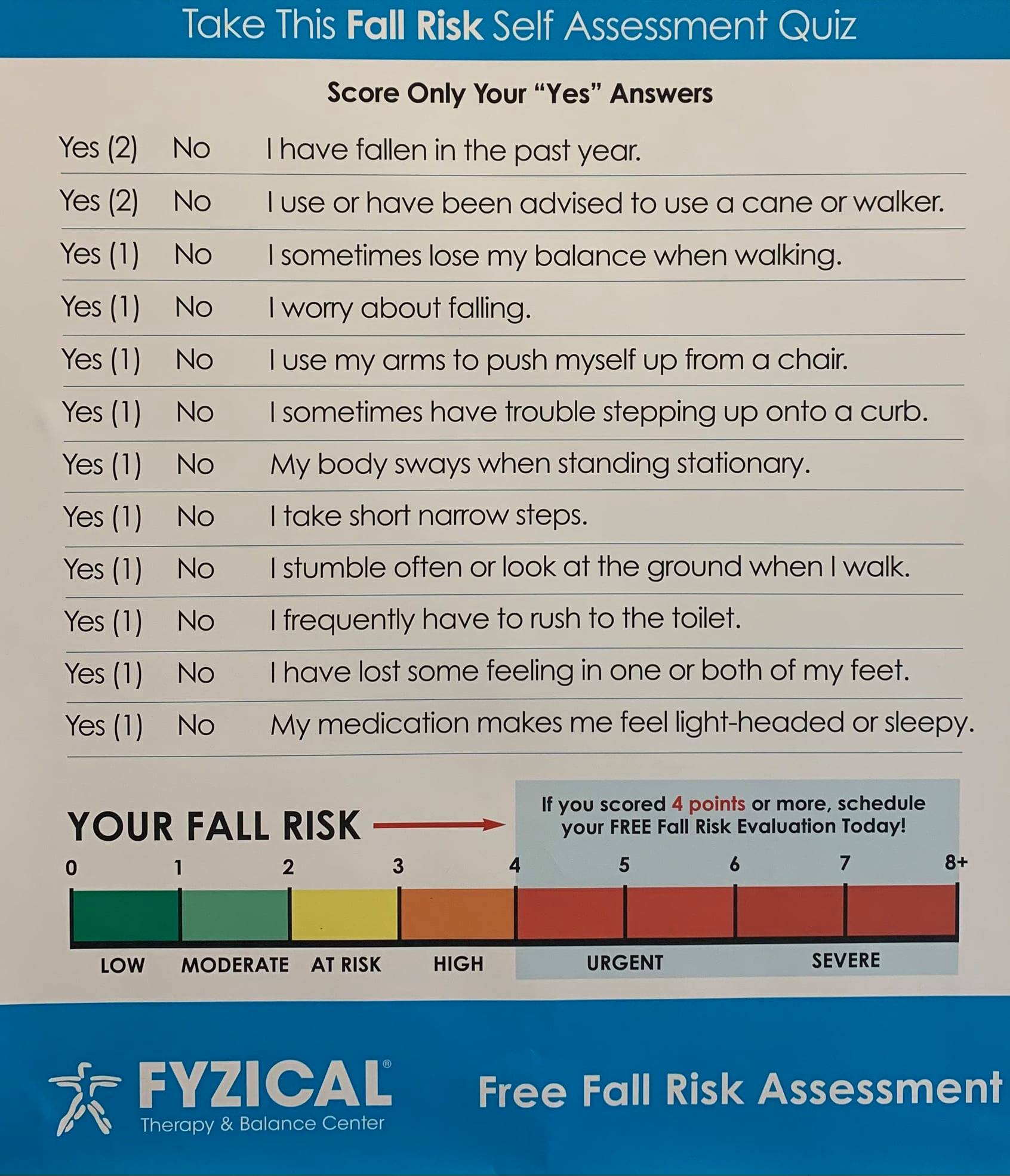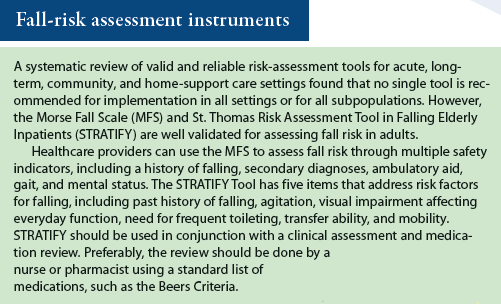The Ultimate Guide To Dementia Fall Risk
Wiki Article
Top Guidelines Of Dementia Fall Risk
Table of Contents7 Easy Facts About Dementia Fall Risk DescribedThe Greatest Guide To Dementia Fall RiskDementia Fall Risk Things To Know Before You BuyAn Unbiased View of Dementia Fall Risk
An autumn risk analysis checks to see just how likely it is that you will certainly fall. The assessment typically consists of: This includes a series of questions about your overall health and wellness and if you have actually had previous falls or troubles with equilibrium, standing, and/or walking.STEADI includes screening, evaluating, and treatment. Interventions are recommendations that may minimize your threat of falling. STEADI consists of 3 actions: you for your risk of succumbing to your risk variables that can be improved to attempt to avoid falls (as an example, equilibrium troubles, damaged vision) to minimize your risk of dropping by utilizing effective techniques (for instance, giving education and resources), you may be asked numerous questions including: Have you dropped in the past year? Do you really feel unsteady when standing or walking? Are you stressed over falling?, your supplier will check your stamina, balance, and stride, using the adhering to loss analysis tools: This test checks your stride.
If it takes you 12 secs or more, it may imply you are at higher threat for an autumn. This test checks strength and balance.
The placements will get more difficult as you go. Stand with your feet side-by-side. Relocate one foot halfway onward, so the instep is touching the huge toe of your other foot. Relocate one foot totally in front of the other, so the toes are touching the heel of your other foot.
The Ultimate Guide To Dementia Fall Risk
The majority of drops take place as an outcome of multiple contributing factors; therefore, managing the risk of dropping begins with identifying the aspects that contribute to drop risk - Dementia Fall Risk. Some of the most pertinent threat factors include: Background of previous fallsChronic medical conditionsAcute illnessImpaired stride and equilibrium, reduced extremity weaknessCognitive impairmentChanges in visionCertain high-risk drugs and polypharmacyEnvironmental factors can also enhance the threat for falls, consisting of: Insufficient lightingUneven or damaged flooringWet or slippery floorsMissing or harmed hand rails and get hold of barsDamaged or poorly fitted tools, such as beds, mobility devices, or walkersImproper use assistive devicesInadequate guidance of individuals residing in the NF, consisting of those who display hostile behaviorsA effective fall threat administration program needs a detailed medical analysis, with input from all members of the interdisciplinary team

The treatment strategy need to also include interventions that are system-based, such as those that promote a safe atmosphere (ideal lighting, hand rails, get hold of bars, and so on). The effectiveness of the interventions need to be evaluated occasionally, and the treatment strategy revised as necessary to reflect adjustments in the loss threat evaluation. Carrying out a fall threat monitoring system making use of evidence-based ideal method can decrease the prevalence of drops in the NF, while limiting the capacity for fall-related injuries.
What Does Dementia Fall Risk Do?
The AGS/BGS guideline advises screening all adults matured 65 years and older for loss threat annually. This testing contains asking people whether they have actually dropped 2 or more times in the previous year or sought medical attention for a fall, or, if they have actually not dropped, whether they really feel unsteady when strolling.Individuals that have dropped when without injury should have their balance and gait evaluated; those with stride or balance problems must receive extra evaluation. A background of 1 loss without injury and without gait or equilibrium issues does not call for more evaluation beyond continued annual autumn danger testing. Dementia Fall Risk. A fall danger evaluation is needed as part of the Welcome to Medicare evaluation

Some Known Incorrect Statements About Dementia Fall Risk
Recording a falls history is one of the quality signs for fall prevention and monitoring. Psychoactive drugs in particular are independent forecasters of drops.Postural hypotension can frequently be minimized by reducing the dosage of blood pressurelowering medicines and/or stopping medicines that have orthostatic hypotension as a negative effects. Use of above-the-knee assistance hose pipe and sleeping with the head of the bed elevated may additionally decrease postural reductions in blood stress. The recommended components of a fall-focused physical exam are revealed in Box 1.

A Pull time greater than or equivalent to 12 seconds suggests high loss threat. Being not able to stand up from a chair of knee height without making use of one's arms indicates enhanced autumn danger.
Report this wiki page